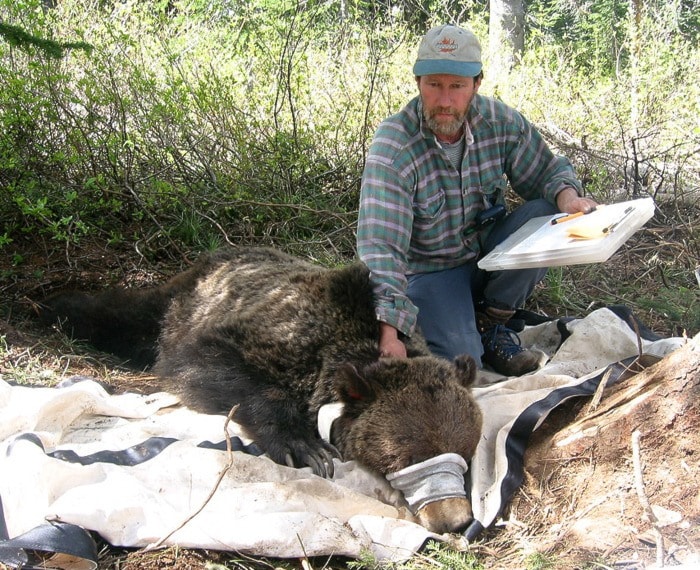Bear biologist Michael Proctor, from Kaslo, will make a free presentation on May 15 at 7:30 p.m. in the Creston Room at the Creston and District Community Complex.
Grizzly bears in the Creston area turn out to be pretty important on a continental and regional scale. While the bears used to range from northern Canada down to Mexico, the edge of their North American distribution in these parts (west of the main Rocky Mountains) is just south of Creston in northern Idaho and Montana. So, efforts to resist any further extirpations (local extinctions) of that shrinking distribution around Creston are pretty important.
Proctor is co-operating with biologists from the US Fish and Wildlife Service to study the bear’s movements and habitat use between Castlegar, Creston and Cranbrook. One of their main goals is to see how bears move through human environments and survive.
“Many don’t survive, but many do,” said Proctor.
They want to learn from those clever ones who live to a ripe old age and manage to co-exist with the people in the area. Grizzly bears usually live in the mountains away from humans, but occasionally come to the valley bottoms, especially in the early spring when snow covers most of the higher country.
Proctor has radio collared several bears who use the Creston Valley occasionally. He uses GPS radio collars that follow and record location data once each hour, 24 hours a day, seven days a week.
As a matter of fact, his data showing a few grizzly bears using the Creston landfill helped convince the town to secure the landfill with an electric fence. Last summer found several grizzly bears in the Creston Valley due to a poor berry crop in the backcountry. Proctor even started an electric fencing 50 per cent cost share program for farmers with grizzly bear problems.
The information collected from his collared bears will be used to help people and bears coexist with minimal trouble and improve the bear’s chances of long-term persistence in the region. His research has shown that bears are having a hard time moving across human settled valleys and between mountain ranges such as the Purcells and Selkirks that flank the Creston Valley. Controlling bear attractants is the single most important action humans can do to coexist with these animals.
— SUBMITTED
